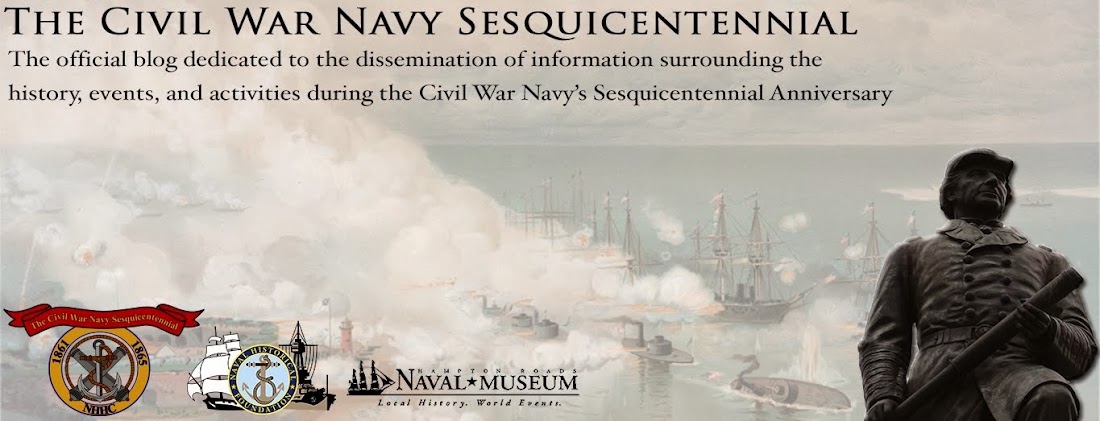In this rendering, President Abraham Lincoln has finished reading the Emancipation Proclamation to his cabinet. Sitting immediately to Lincoln's right is Navy Secretary Gideon Welles, with the president's message in front of him. The papers on the table in the far right are the Coast Survey's slave population maps that initally guided the work the Blockade Strategy Board. (Image from NOAA archives)
Far from his family in Cambridge, Mass., Commander Charles Davis was finishing his usual Tuesday night dinner with Alexander Dallas Bache at his Capitol Hill residence. It was a troubled time in Washington. In late May 1861, the capital was nearly surrounded by traitors. To the south, Virginia was to vote on secession that week. The outcome, except in the western counties, was expected to be overwhelmingly in favor of leaving the Old Union. To the north and east, Maryland was in riot.
There was little comfort in seeing Union volunteers from Massachusetts and New York using the unfinished Capitol as a large barracks and armory. For both men, there was even less comfort in knowing the water approaches -- up the Chesapeake Bay and on the Potomac River -- were well within the range of the large naval guns seized by rebellious shipyard workers in Portsmouth.
With that as backdrop, it was to be one of the most important "private" dinners in the Civil War because it set in a motion a flexible but well thought-out plan that eventually crushed the rebellion.
In the pre-war years when Bache, the superintendent of the Coast Survey, entertained in the survey's drawing rooms, his parties were known for "the quip and the jest." They were remembered as "noctes ambiranae," recalling his days touring Germany with Joseph Henry, now heading the Smithsonian Institution. Davis, a rarity among naval officers then, was educated at Harvard, more an an academic that seagoing war-fighter and extremely comfortable with Bache, the great grandson of Benjamin Franklin.
The West Point-educated Bache, instead of continuing the banter he was known for, outlined his ideas to the head of the
Nautical Almanac on how the Union Navy could enforce the president's recently proclaimed blockade. As matters stood that spring along the 3,500-mile Southern coast, the Confederates were correct in arguing that it was a "paper blockade," not at all interfering with shipping coming in or going out.
Behind closed doors in the survey's spartan offices even before the war broke out, Bache had his cartographers working on two maps -- one of the slaveholding states from Delaware to Texas and the other of virginia -- using 1860 census data to indicate by shading the percentage of slaves in each county. Bache saw these maps as critical political and military tools, as important to the war effort as the survey's charts of Southern ports and waterways.
In raw form, Bache's ideas complemented those of Lieutenant General Winfield Scott's plan to strange the rebellion from the Atlantic on the east and the Gulf of Mexico in the south and drive westward and southward across land using the inland rivers. The superintendent, on paper subordinate to the Treasury secretary, then was at the height of his political (coming from a long line of public officials on his mother's side and through marriage) and bureaucratic powers (especially through his close alliance with Henry) as he laid out his plan to "establish a military commission ... to determine military proceedings and operations along the coast." The good bureaucrat that he was, Bache had already talked with Gustavus Fox, the Navy's ambitious and senior clerk, about systematizing the war effort.
Another month passed before the Blockade Strategy Board actually met at the Navy Department's request. The first meeting and all that followed were held secretly inside the Smithsonian's castle on the mall, a location conveniently between the War and Navy Departments by the White House and the Coast Survey on Capitol Hill. Bache was there, as was Davis, now the board's secretary. Samuel F. DuPont, another close friend of Bache and Davis, also was named to the "secret, important and complex service." The "military member" was Major John Barnard, an expert in coastal fortifications and a former superintendent of the Military Academy.
Nothing moved fast in Washington until the Union Army's calamity outside of Manassas Junction July 21. By then, the board had only completed work on the Atlantic Coast. Nonetheless Navy Secretary Gideon Welles and Fox called them to the Navy Department to hear the details. The two senior Navy civilians passed the information onto Lincoln, the rest of the cabinet, and to Scott.
As the summer heated up, the board's straegy was accepted as the best way forward -- even its call for joint operations, a goal rarely met during the Civil War. It also appeared to be the fastest way to win the war.
Welles in his annual report to Congress couldn't say enough good things about the strategy and how it worked at Port Royal and the Outer Banks. It was a lonesome cheery note coming from a cabinet secretary that December. Even if he knew, he didn't mention the private dinner party talk between two old friends where it was first rolled out in detail.
As for the blockade strategy ensuring quick victory, that turned out to be wishful yearend thinking.








